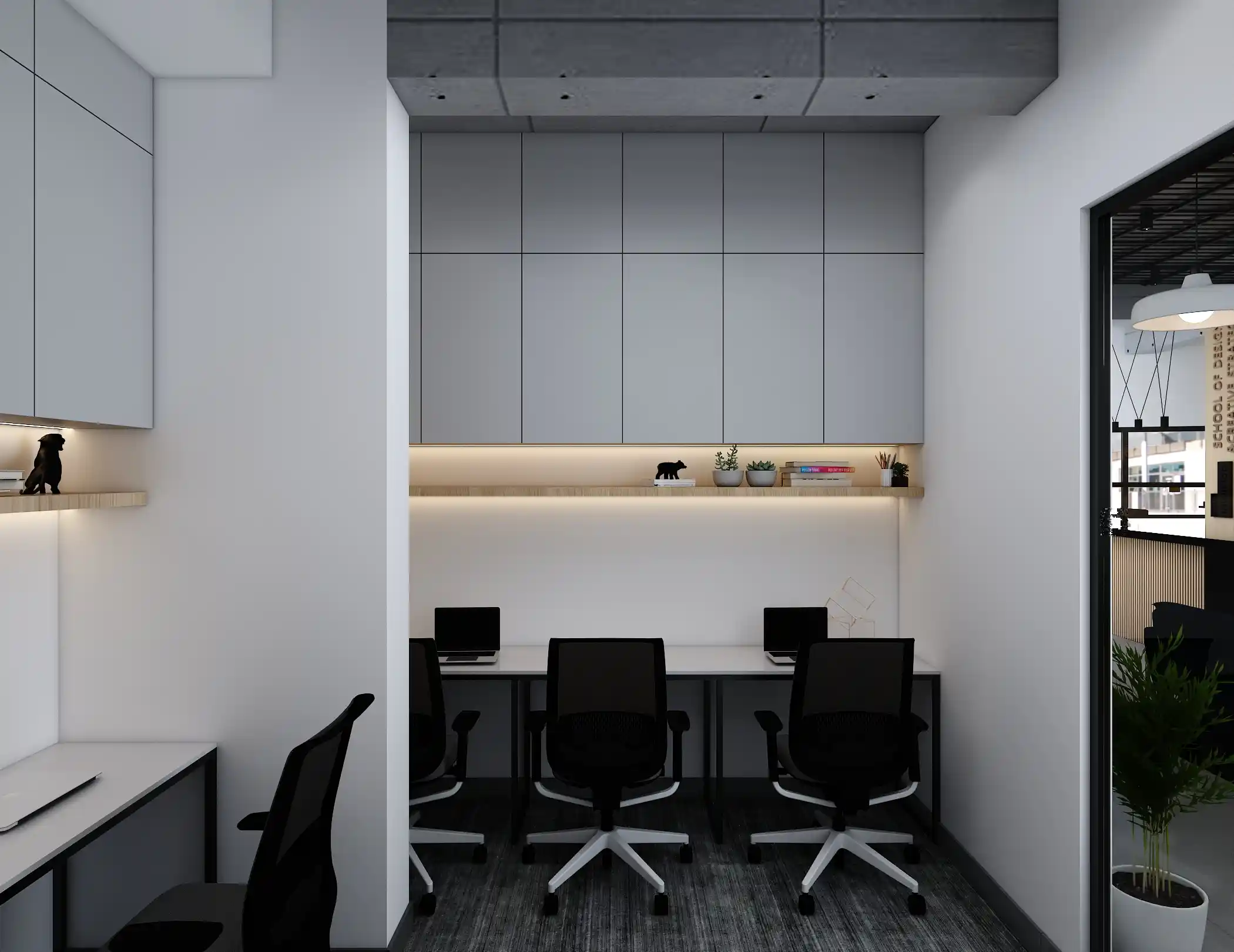Introduction
Commercial interior design is much more than mere decoration; it’s about creating an environment that enhances workflow, reflects the brand’s ethos, and meets specific business needs. Bangalore, with its booming corporate, tech, and hospitality sectors, is witnessing a surge in demand for spaces that are both functional and visually appealing. An effective commercial space combines utility and aesthetics to create an environment that motivates employees, attracts clients, and maximizes productivity.
In today’s competitive business environment, a well-designed commercial space isn’t just about aesthetics; it’s a strategic asset. In Bangalore, known as India’s tech and innovation hub, the demand for functional and aesthetic commercial design solutions has soared. Modern businesses are seeking spaces that inspire creativity, enhance productivity, and reflect their brand identity. This article explores key aspects of commercial interior design in Bangalore, providing insights into how businesses can create functional, beautiful spaces with the help of experienced designers.
Key Considerations for Functional and Aesthetic Commercial Design
In designing a successful commercial space, various elements come into play. Here are essential aspects to keep in mind:
1. Space Planning and Layout Optimization
- Maximizing Usable Space: Efficient space planning ensures that every square foot is utilized optimally without overcrowding.
- Workflow Enhancement: A well-planned layout enhances movement and collaboration among employees, boosting productivity.
- Flexibility and Scalability: Adaptive design enables easy reconfiguration as the business grows or changes its operational needs.
- Zoning for Different Functions: By creating zones for workstations, meeting rooms, break areas, and social spaces, you can encourage both focused work and relaxation.
2. Ergonomics and Comfort
- Employee Well-being: Comfortable seating, adjustable desks, and ergonomic furniture minimize strain and fatigue.
- Acoustic Design: Soundproofing materials and strategic layouts can reduce noise, essential in open office settings.
- Climate Control: Proper ventilation, heating, and cooling systems improve indoor air quality and comfort.
- Natural Light and Artificial Lighting: Balancing natural light with artificial lighting helps reduce eye strain and energizes the workspace.
3. Brand Reflection and Aesthetic Appeal
- Visual Identity: Colors, materials, and design elements that align with the brand’s values and message can strengthen brand identity.
- Consistency: Consistent design elements across all office areas give a professional look and feel to the entire space.
- Artwork and Accents: Unique artwork, branded elements, and accent pieces can give the space character and make it memorable.
- Material Selection: High-quality materials not only add durability but also reflect professionalism and attention to detail.
4. Sustainable Design Choices
- Eco-friendly Materials: Using materials like reclaimed wood, bamboo, and recycled metal can reduce the environmental impact.
- Energy Efficiency: LED lighting, energy-efficient appliances, and smart systems reduce energy costs.
- Waste Reduction: Modular furniture and recycled materials support sustainable practices in the long run.
- Biophilic Design: Incorporating plants and natural elements can improve air quality and create a calming effect.
5. Technology Integration
- Smart Workspaces: Automated lighting, climate control, and security systems enhance convenience and reduce energy consumption.
- Audio-Visual Equipment: Meeting rooms with advanced AV equipment make presentations and virtual meetings seamless.
- Connectivity: Strong Wi-Fi, charging stations, and wireless technology are essential for modern business operations.
- Interactive Displays and Digital Signage: These can help communicate the company’s message, engage visitors, and create a tech-savvy environment.
6. Lighting Design
- Natural Light Maximization: Large windows, skylights, and open layouts allow ample daylight to enter, creating a fresh, inviting space.
- Task Lighting: Bright, focused lighting in work areas minimizes eye strain.
- Ambient Lighting: Soft lighting for lounges and relaxation zones encourages employees to unwind.
- Accent Lighting: Spotlights on artwork or branding elements can enhance the aesthetics of the space.
7. Safety and Compliance
- Fire Safety: Fire extinguishers, smoke detectors, and emergency exits are critical to a safe work environment.
- Accessibility: Wheelchair access, ramps, and elevators ensure inclusivity.
- Non-slip Flooring and Safe Materials: Flooring that reduces slip risk and materials that are non-toxic are vital for safety.
- Adhering to Local Regulations: Bangalore’s commercial buildings must follow specific local guidelines for safety and design.
The Role of Professional Commercial Interior Designers in Bangalore
Commercial interior designers in Bangalore bring local expertise, creativity, and a practical understanding of regulatory requirements to each project. Their role is to understand a business’s goals, evaluate the space, and create a cohesive design plan that aligns with both functional needs and aesthetic aspirations. Here’s how commercial interior designers can help:
1. Tailored Design Solutions
- Every business has unique needs; designers work to create customized solutions that fit the specific goals and branding.
- By understanding industry trends and client requirements, they craft spaces that are both modern and timeless.
2. Project Management
- Interior designers manage every aspect of the project, from budgeting and scheduling to supervising installations.
- Their experience with local vendors and suppliers can streamline the process, ensuring that quality materials are used without exceeding budget constraints.
3. Innovation and Trends
- Designers stay updated with the latest trends in commercial interiors, from open layouts to sustainable practices.
- By integrating new design trends, they can make commercial spaces more appealing and relevant to current market demands.
Popular Trends in Bangalore’s Commercial Interior Design
Bangalore’s dynamic corporate environment has led to the adoption of various design trends, merging functionality with aesthetic appeal:
1. Open Layouts and Collaborative Spaces
- Open layouts create a sense of transparency and teamwork, which is popular in tech and startup environments.
- Collaborative zones and lounge areas promote spontaneous idea-sharing and teamwork.
2. Minimalist and Modern Designs
- Clean lines, minimal furnishings, and modern decor provide a sleek, professional look.
- This style reduces clutter and helps businesses make a lasting impression on clients.
3. Use of Biophilic Elements
- Incorporating plants, water features, and natural light supports employee well-being.
- Biophilic design is particularly appealing in Bangalore, as it aligns with the city’s focus on sustainability.
4. Industrial Style Interiors
- Exposed beams, metal finishes, and a rugged aesthetic give a bold, modern look.
- This style is especially popular in creative industries and tech workspaces.
5. Tech-Enhanced Spaces
- From smart lighting to automated conference rooms, technology is transforming how commercial spaces operate.
- High-tech, adaptable spaces are becoming the norm in Bangalore’s forward-thinking business sector.
How to Choose the Right Commercial Interior Designer in Bangalore
Finding the right designer for your project is crucial to achieving a balance between aesthetics and functionality. Here’s what to consider:
- Experience and Portfolio: Review their previous projects to understand their design style and versatility.
- Industry Knowledge: Designers familiar with the needs of your industry can create more effective, purpose-built spaces.
- Budgeting Skills: A good designer can deliver quality within budget constraints.
- Client Reviews and References: Positive feedback and client satisfaction are indicators of reliability and quality.
- Communication Skills: A designer who listens and understands your vision can bring it to life more effectively.
Conclusion
Functional and aesthetic commercial design is an investment that can yield substantial returns by creating a motivating workspace, attracting clients, and enhancing brand image. Bangalore’s competitive commercial landscape requires businesses to adopt smart design solutions that balance productivity and beauty.
Whether you’re a tech startup, a retail business, or a corporate office, commercial interior design in Bangalore is about more than just visual appeal; it’s about creating spaces that work for your people and your brand. Partnering with experienced commercial interior designers in Bangalore can be the first step toward a functional, inspiring workspace that meets all your operational needs



